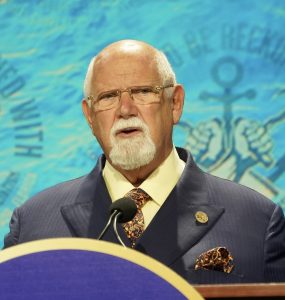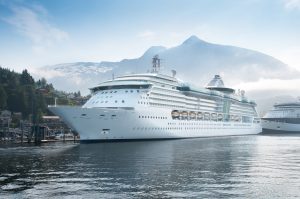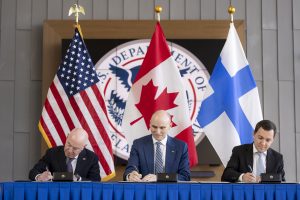Within hours of receiving the request, the U.S. Department of Transportation’s Federal Highway Administration (FHWA) announced the immediate availability of $60 million in “quick release” Emergency Relief (ER) funds for the Maryland Department of Transportation to rebuild the Francis Scott Key Bridge after a container ship, the Singapore-flagged Dali chartered by Maersk, struck the bridge on March 26.
These funds serve as a down payment toward initial costs, and additional Emergency Relief program funding will be made available as work continues.
“No one will ever forget the shocking images of a container vessel striking the Francis Scott Key Bridge, causing its collapse and the tragic loss of six people,” said U.S. Transportation Secretary Pete Buttigieg. “The federal emergency funds we’re releasing today will help Maryland begin urgent work, to be followed by further resources as recovery and rebuilding efforts progress. President Biden has been clear: the federal government will do everything it takes to help rebuild the bridge and get the Port of Baltimore back open.”
FHWA’s Emergency Relief program provides funding to States, Territories, Tribes, and Federal Land Management Agencies for highways and bridges damaged by natural disasters or catastrophic events. These “quick release” Emergency Relief funds are an initial installment to help restore essential transportation. Additional funds needed for the rebuilding of the bridge will be supported by the Emergency Relief program through nationwide funding allocations. FHWA is also providing technical assistance, conducting site assessments, and administering emergency contracts for the new bridge.
The structure is located in the Baltimore Harbor and Port of Baltimore. Following the incident, the channel has been closed, and all shipping traffic to Seagirt Marine Terminal at the Port of Baltimore has been stopped and diverted elsewhere. The Port of Baltimore is essential to the regional economy and national supply chains, and the I-695 corridor, of which the bridge was a part, provides a vital connection for people and goods traveling along the East Coast.
FHWA is actively coordinating with federal, state, and local officials in the region, including the Maryland Department of Transportation, the Maryland Transportation Authority, the City of Baltimore, U.S. Coast Guard, the National Transportation Safety Board (NTSB), and others to mitigate supply chain impacts, manage traffic, reopen the port, and ultimately rebuild the bridge. The NTSB, an independent agency, is the leading the investigation into the vessel allision and subsequent bridge collapse.
The Governor of Maryland has declared a State of Emergency and FHWA has approved MDOT’s application, making the event eligible for Emergency Relief funding. The funds will be used for eligible costs associated with debris removal, demolition, detours, emergency repairs, and design and reconstruction on I-695 and the Francis Scott Key Bridge.
The Maryland Department of Transportation is continuing to conduct necessary emergency operations, such as implementing detours, to maintain traffic as the disaster area is not passable, and to repair applicable sections sufficiently to protect facilities from further damage and clearing the navigable waters to safely reopen operations at the Port of Baltimore.
(Photo by USACE of current Bridge scene)








